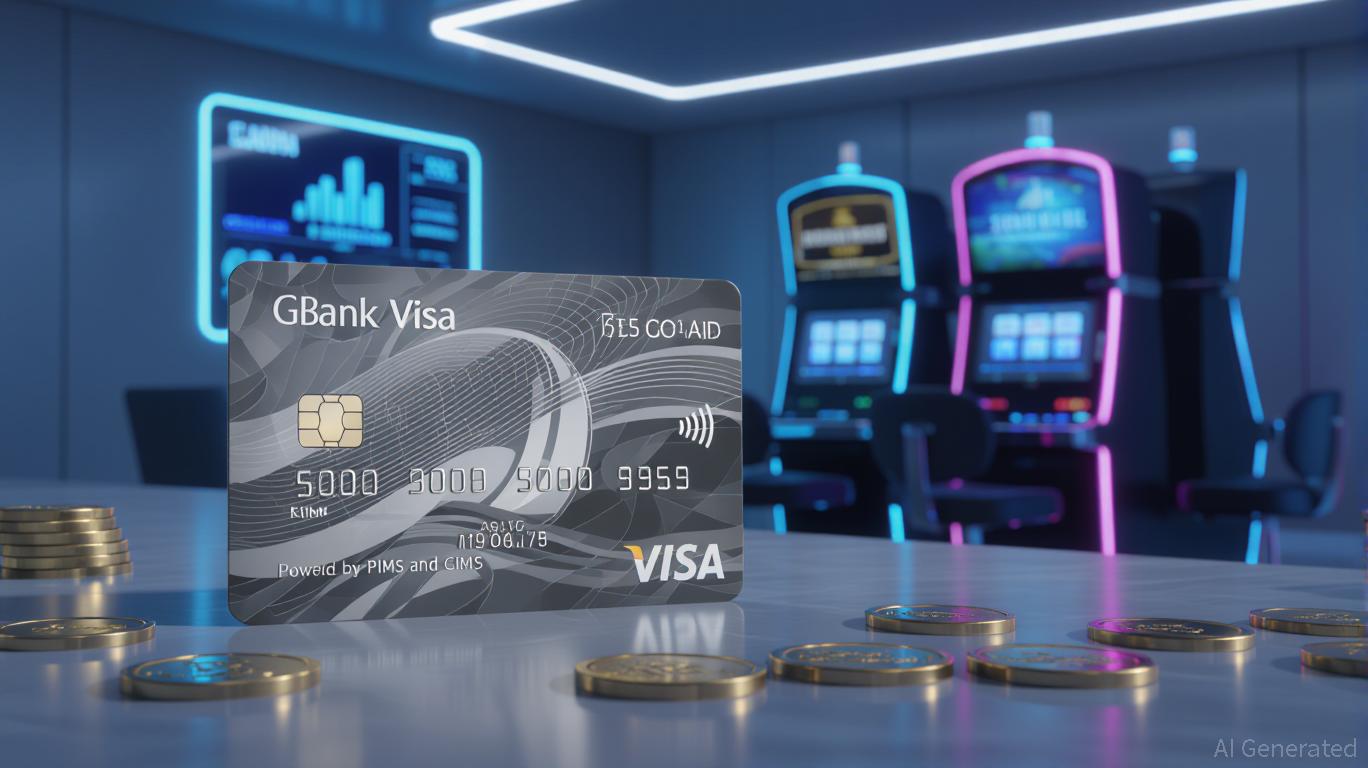
The gaming FinTech sector is a battlefield of innovation, regulation, and razor-thin margins. Yet, GBank Financial Holdings (NASDAQ: GBFH) is emerging as a standout contender, leveraging strategic partnerships, regulatory expertise, and a bold uplisting to Nasdaq to position itself at the intersection of gaming and financial services. For investors, the question isn’t just whether GBFH can survive the sector’s turbulence—it’s whether it can dominate it.
Competitive Edge: Tailored Products and Scalable Partnerships
GBank’s recent foray into the gaming FinTech space is anchored by two pillars: niche financial products and strategic fintech alliances. The launch of the GBank Visa Signature® Card in 2025 is a masterstroke. Targeting gamers and sports enthusiasts, this card isn’t just a payment tool—it’s a lifestyle product. With premium benefits like cashback on in-game purchases and exclusive access to esports events, it taps into a demographic that’s both tech-savvy and financially active. The card’s success hinges on its ability to convert discretionary spending into interchange revenue, a metric that’s already showing promise.
But the real magic lies in GBank’s partnership with BankCard Services (BCS), a subsidiary under its investment umbrella. BCS is rolling out Pooled Player and Pooled Consumer Accounts powered by PIMS and CIMS™, which streamline financial management for gaming operators and players. These accounts are scalable, secure, and designed to handle the high-volume, real-time transactions typical of the gaming industry. By 2025, BCS has already onboarded three new programs, including a cash access service for casinos and a social gaming operator, both leveraging MasterCard and i2c’s Product Express. These partnerships aren’t just incremental—they’re foundational to GBank’s vision of becoming the go-to financial infrastructure for gaming.
Operational Milestones: Uplisting and Technological Resilience
GBank’s uplisting to Nasdaq in April 2025 is more than a symbolic win—it’s a strategic lever. Trading on a major exchange boosts liquidity, attracts institutional investors, and enhances brand credibility. For a company operating in a high-risk sector, this move signals confidence in its long-term prospects. The uplisting also aligns with GBank’s broader ambition to scale its fintech offerings.
Technologically, GBank is doubling down on secure, scalable solutions. The BoltBetz slot machine application, set to launch by year-end, integrates with its gaming finance infrastructure, creating a closed-loop ecosystem where players can manage funds, access rewards, and even tokenize assets. This isn’t just about convenience—it’s about capturing data and building loyalty. Meanwhile, BCS’s prepaid issuing capabilities, powered by MasterCard and i2c, are already generating revenue, with a new cashless venue program launched in Q1 2025.
Growth Potential Amid Regulatory and Technological Headwinds
The gaming FinTech sector is a regulatory minefield. From sports-based event contracts to sweepstakes casinos, operators face a patchwork of state laws and federal scrutiny. GBank’s leadership, however, is no stranger to navigating these waters. Kathryn S. Lever, a Class III director with deep legal and compliance expertise in gaming and FinTech, is a linchpin. Her background at Great Canadian Gaming and Everi Payments gives her the insight to anticipate regulatory shifts and build compliance frameworks that protect the company’s operations.
Technologically, GBank is investing in resilience. The Federal Reserve’s 2025 research on gaming platforms highlights the risks of instant payments and virtual currencies, but GBank’s partnerships with Sila API and its focus on tokenization and biometric authentication position it to mitigate these risks. By embedding compliance into its tech stack, GBank isn’t just reacting to regulators—it’s staying ahead of them.
The Long Game: Why This Matters for Investors
GBank’s uplisting and strategic bets create a compelling narrative for long-term investors. The company’s P/E ratio of 29.2x may seem lofty, but it reflects the market’s belief in its ability to execute on its vision. With a $20 million funding round in 2024 and a $20 million private placement in October 2024, GBank has the capital to scale its initiatives. The key risks? Regulatory delays, governance concerns (notably the lack of independent directors), and the execution of the BankCard Services merger.
For those willing to stomach the volatility, GBank offers a high-conviction play. The gaming FinTech sector is projected to grow at a double-digit CAGR, and GBank’s tailored products, regulatory agility, and technological depth position it to capture a significant share. However, investors should monitor insider selling activity and the progress of its Nasdaq transition.
Final Call: A Gamble Worth Taking?
GBank Financial Holdings isn’t for the faint of heart. The gaming FinTech sector is as volatile as it is lucrative, and GBFH’s path to dominance is littered with regulatory and operational hurdles. But for investors who can stomach the risks, the rewards are substantial. The company’s uplisting, strategic partnerships, and innovative product suite create a foundation for long-term value. If GBank can navigate the regulatory maze and scale its fintech infrastructure, it could emerge as a leader in a sector poised for explosive growth.
In the end, the question isn’t just whether GBank can survive—it’s whether it can thrive in a world where gaming and finance are becoming one. For those betting on the future, the stakes have never been higher.
